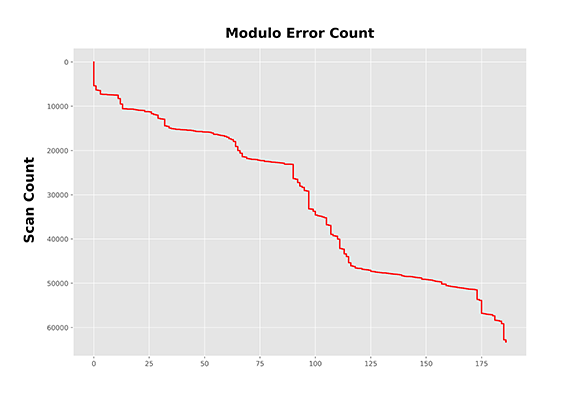This 9plus had transmission problems, from either the sea cable or the CTD’s internal data transmission PCBs. The data provide the following clues:
- Each spike is extreme. A sudden 15 °C drop in temperature does not occur instantaneously in the ocean, only to bounce back a moment later. Extreme spikes like these are usually electrical in nature, due to noise from sensors or cables. It is very unlikely that this data is representative of the environment.
- Spikes occur in the raw data. Data processing errors can produce spikes in parameters like density or sound velocity, which are derived from a calculation of temperature and conductivity. However, spikes occur in the raw unprocessed voltage from the dissolved oxygen sensor, indicating that the spikes precede data processing.
- All data channels exhibit spiking. If the spikes were only present in the temperature data, but data from the other sensors are normal, then the problem is likely from the SBE 3 temperature sensor or its cable. In this case, all data channels exhibit spikes, indicating that the problem is something common to all sensors—probably transmission.
- The “Modulo Error Count” increases throughout the profile. The figure above shows the Module Errors and increasing, often in line with data spikes. Modulo Errors indicate problems with transmission, where the CTD signal is affected by electrical noise. The most common source of these errors is sea cable noise, but can also result from the 9plus internal PCBs in rare cases.
When problems with data transmission are evident,
- Use a test sea cable to troubleshoot. This is especially true if the CTD produces data spikes before entering the water. The test sea cable is a direct connection between the deck unit and the CTD. It replaces the sea cable used for deployment and bypasses the winch and slip ring, allowing the user to rule out common sources of error.
- If one is available, swap out the CTD. If another CTD produces clean data on the same sea cable, you can be reasonably confident that the CTD itself is producing noise.

